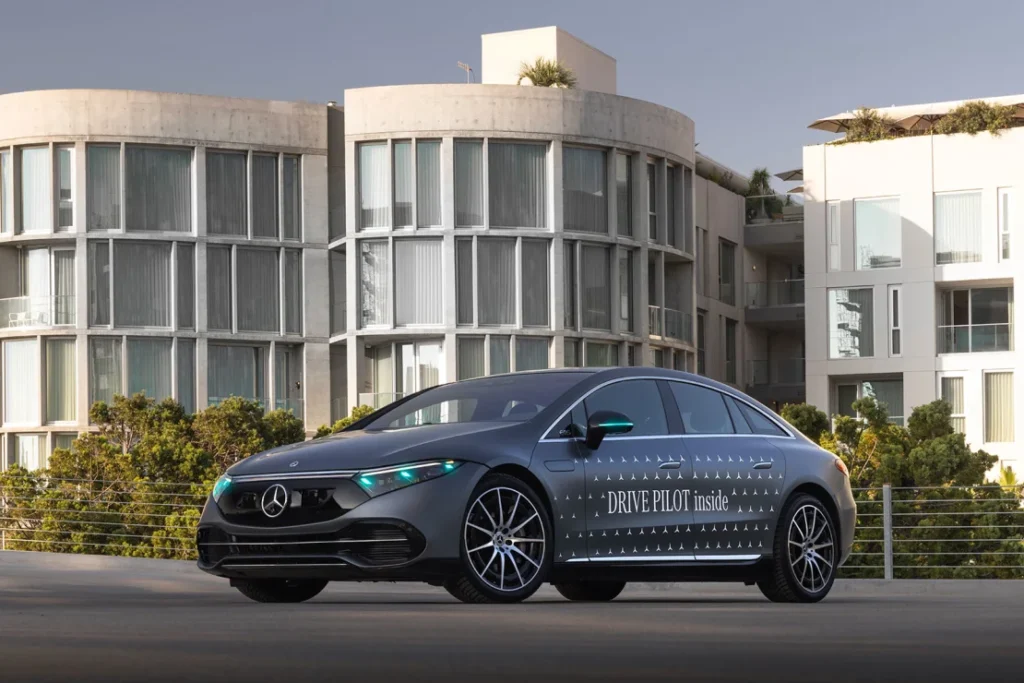In the United States, most vehicles are equipped with three distinct colors of external lights. White lights serve as headlights and reverse lights, red lights function as brake lights and rear lights, and amber lights are designated for turn signals, particularly on the front side. However, Mercedes-Benz has recently obtained approval to introduce a groundbreaking fourth color: turquoise blue lights specifically designed to signal when a Mercedes car is operating in autonomous mode.
As of now, only California and Nevada have given the green light for this innovative light color. These two states are the sole jurisdictions where Mercedes’ “conditionally autonomous” Drive Pilot technology complies with legal regulations.
The Mercedes Drive Pilot system is engineered to operate in congested traffic situations on specific major highways, where vehicles are moving at speeds below 40 miles per hour. In such circumstances, drivers are allowed to lift their feet off the pedals, release the steering wheel, and, notably, divert their attention away from the road—an aspect that sets it apart from other driver assistance systems.

In contrast to all other driving assistance systems, such as Tesla’s “Full Self Driving” and General Motors’ “Super Cruise,” which mandate the driver’s continual attention to the surroundings, Mercedes’ Drive Pilot sets itself apart by allowing drivers to consistently divert their attention from the road. This can continue until the system issues an alert prompting the driver to resume control, typically in situations like traffic acceleration. During this autonomous mode, drivers have the freedom to browse the Internet or engage in gaming activities using the car’s expansive central screen, all while ensuring they remain awake through built-in sensors.
The distinctive light blue color was deliberately chosen for its visibility and unmistakable nature. It has been carefully crafted to avoid any confusion with existing lights on passenger cars, while also distinctly differing from the deeper blue hues utilized by law enforcement and other emergency vehicles.
Although the Society of Automotive Engineers advocates for this particular shade of blue to signify autonomous vehicle operation, Mercedes holds the distinction of being the first automaker to secure approval for its implementation. These turquoise blue lights will be prominently displayed both at the front and rear of the vehicle, integrated around the taillights and headlights.
Mercedes emphasizes the necessity of the turquoise lights as a means to communicate to both passing drivers and law enforcement that the vehicle is operating under fully automated control. This proactive signaling is designed to prevent any misinterpretation when observers notice the driver disengaging from the road, ensuring that external parties do not misconstrue the situation as a violation.
The Mercedes Drive Pilot system is slated for availability on Mercedes S-class and EQS models exclusively in Nevada and California, with an anticipated launch in early 2024. However, it’s important to note that the technology’s functionality will be limited to highways within the borders of California and Nevada, emphasizing the regional scope of its application.

